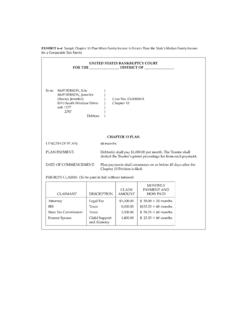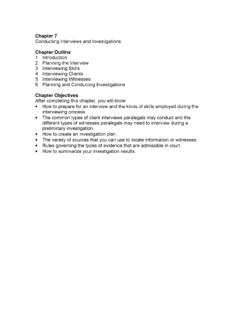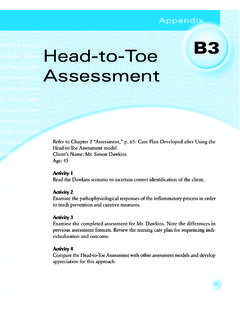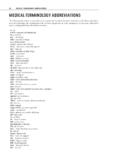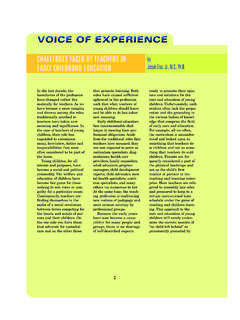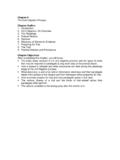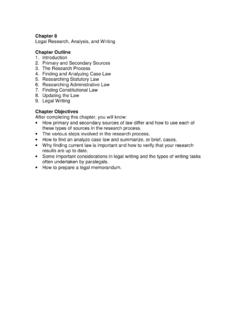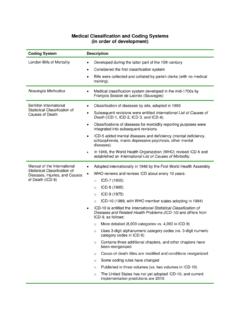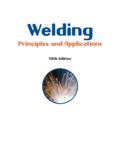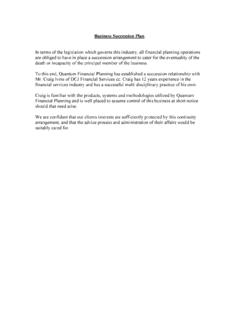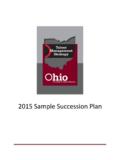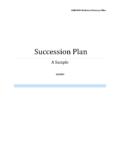Transcription of 4 THE LAW OF SUCCESSION DEATH TESTATE OR INTESTATE
1 11 THELAW O FSUCCESSION:DEATHTESTATE ORINTESTATEDEATH WITH A WILL TESTACY (HOWER 90)Terminology Related to Wills (Hower 90)Holographic Will (Hower 91)As noted in the text, California does recognize the validity of holographic wills. Prob 6111. Tobe valid, a holographic will must be signed by the testator and the will s material provisionsmust be in the handwriting of the testator, and such a document will constitute a valid holo-graphic will whether it has been witnessed or not. Prob 6111(a). In addition, the entire will neednot be in the testator s handwriting; statements of testamentary intent in holographic willsmay be made either in the testator s handwriting or as part of a commercially printed formwill.
2 Prob 6111(c). A holographic will may be proved in the same manner as any other writing(Prob 8222) including through the use of extrinsic evidence (Prob ). A holographic willneed not be dated to be valid; however, if not dated and the provisions of the holographic willare inconsistent with the provisions of another will, the holographic will is invalid to the ex-tent of the inconsistency unless the date of execution of the holographic will is proven to be af-ter the date of execution of the other will. Prob 6111(b)(1).Nuncupative Will (Hower 92)As noted in the text, California does not allow nuncupative Will (Hower 92)Prob 6200, et seq.
3 , set forth the provisions regarding the statutory will authorized in Califor-nia, including the California statutory will form itself (Prob 6240) and its mandatory clauses(Prob 6241).412 Types of Dispositions Gifts Made in a Will (Hower 97)Bequest, Legacy, or Devise (Hower 97)In California, a deviseis a gift, or real or personal property, in a will (Prob 32), and vests at thedeath of the transferor. Prob 21116. Prob 2117 defines the classes of testamentary gifts in Cali-fornia as:specific gifts transfers of specifically identified property;general gifts transfers from general assets that do not give specific property;demonstrative gift a general gift that specifies the fund or property from which the giftis to be made;general pecuniary gift a gift of a fixed dollar amount or in an amount determinable bythe provision of the instrument giving the gift;annuity a pecuniary gift that is payable periodically.
4 Residuary gift a transfer of a gift that remains after satisfaction of all specific and gen-eral , Lapses, and Abatement (Hower 99)Ademption (Hower 99)The recipient of a specific gift has a right to any portion of the specific gift remaining at the timeof transfer plus any balance owing or amount due by reason of the sale or transfer of the spe-cific gift by the transferor. Prob (Hower 100)Gifts to devisees who do not survive the decedent 21109. Failedgifts become a por-tion of the residuary estate. Prob 21111(a). If a residuary gift or future interest is transferred totwo or more persons, but the share of one transferee fails from any reason, then that share passesto the other transferee(s) in proportion to their interest in the gift or future interest.
5 Prob 2111(b).Abatement (Hower 101)The overriding concern in abating gifts is to do so in a manner which will not defeat the trans-feror s plan or purpose. Prob 21400. No distinction is drawn between real and personal prop-erty for purposes of determining priority in abatement. Prob 21401. Gifts abate in the follow-ing order, pursuant to Prob 21402:1. Property not disposed of by the Residuary General gifts not to the transferor s General gifts to Specific gifts to others than the transferor s Specific gifts to any class of gifts, shares of beneficiaries abate pro rata.
6 Prob 21403(a). Annuities anddemonstrative gifts are treated as specific gifts to the extent that they are given out of the identi-fied fund, and general gifts to the extent that they may be satisfied out of property other than thespecified source. Prob 21403(b). If a specific gift is subject to abatement, the recipient may satisfythe contribution for abatement out of other property to preserve the specific gift. Prob 21405. Aspecific gift is not subject to abatement to exonerate another encumbered specific gift. Prob WITHOUT A WILL INTESTACY (HOWER 106) INTESTATE SUCCESSION Statutes (Hower 109)General Rules of Distribution Under State INTESTATE SUCCESSION Statutes (Hower 116)The bulk of the INTESTATE SUCCESSION laws are set forth in Prob 6400, et seq.
7 In California. As Cal-ifornia is a community property state, the INTESTATE SUCCESSION laws take into account the dis-tinction between community property and separate property and treat each differently. [Pleasenote, as previously discussed, that community and quasi-community property are treatedidentically in California. Hence, all further references to community property in this supple-ment should be understood to include quasi-community property as well.]In California, if a decedent dies survived by a spouse, all of the community property in-terest of the decedent passes to the surviving spouse.
8 Prob 6401(a) and (b). This, combined withthe surviving spouse s one-half interest, results in the surviving spouse being the sole ownerof all of the community decedent s separate property is distributed in accordance with Prob 6401(c). The sur-viving spouse receives all of the separate property as well if the decedent is not also survivedby any issue, parent, brother, sister, or issue of a deceased brother or sister. Prob 64901(c)(1).The surviving spouse receives one-half (1/2) of the decedent s separate property if thedecedent also leaves either: (a) one child or the issue of one deceased child, or (b) no issue, botha parent or parents or their issue, or the issue of either of them.
9 Prob 6401(c)(2).The surviving spouse receives one-third (1/3) of the decedent s separate property if thedecedent is also survived by: (a) more than one child; (b) one child and the issue of one or moredeceased children; or (c) issue or two or more deceased children. Prob 6401(c)(3).That part of the INTESTATE estate not passing to the surviving spouse, as above, or if there isno surviving spouse, is distributed (according to Prob 6402(a)) to the surviving issue of the dece-dent, in equal shares if of equal degree. If the issue are not of equal degree, then those of moreremote degree take as provided in Prob 240 (per stirpes those of the nearest generation to thedecedent still living each get a share, and the issue of those of that generation who are deceasedequally divide the share of their deceased ancestor of that generation).
10 Prob 6402(a) and there are no surviving issue, then the estate passes to the following categories of persons,per Prob 6402(c), either equally, if all of the same degree of kinship, or as provided in Prob 240,described above. If there are no surviving persons in the category identified, then the estatepasses to the next category identified, in the order indicated: First, to the decedent s parents. Next, to the issue of parents or either of them. Next, to the grandparents or issue of grandparents. Next, to the issue of a predeceased spouse. Next, to the decedent s closest next of kin (if two or more kindred of equal degree claimthrough different ancestors, then those claiming through the nearest ancestor are preferred).
